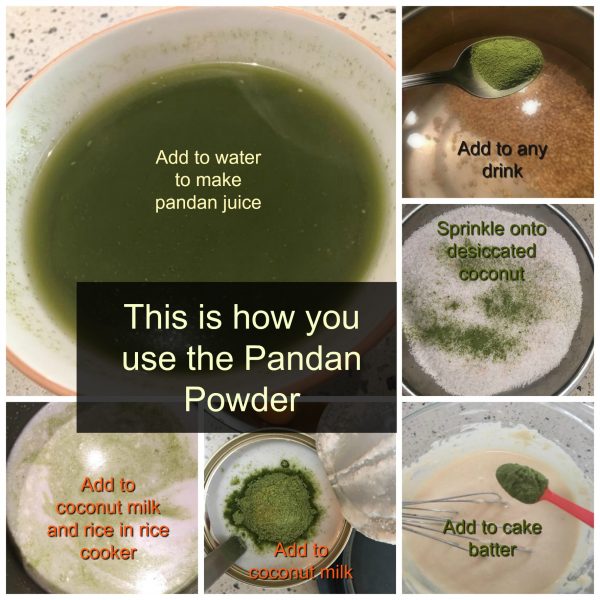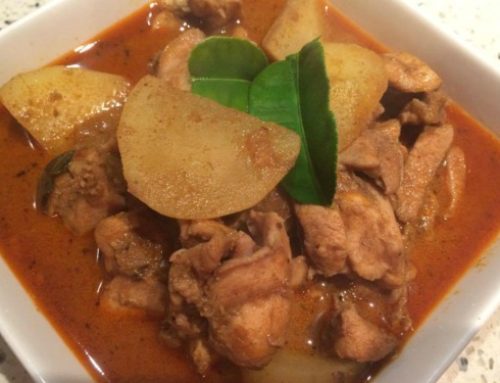Pandan is also known as skrewpine or “fragrant leaves” in Asia and is used for cooking. It can be seen growing abundantly, especially in South East Asia, and you can see the pandan plant at my Aunt’s home in Penang. This plant gives a whole year of unending supply of pandan goodness.
Pandan leaves are used extensively in our everyday cooking as an aromatic flavour enhancer or natural green colouring agent.
Ondeh Ondeh
Kuih Tayap / Dadar
We use the natural green colouring to make Nyonya dishes such as Seri Muka, Kuih Talam, Kaya (coconut jam), Pandan chiffon cake, green bean soup, black glutinous rice, gandum, chendol, Kuih Tayap, Kuih Kosui, Onde Onde, and Abuk Abuk etc. We even place the leaves when cooking our rice as added fragrance.
In Australia, even though you can get fresh pandan leaves or the frozen ones from the Asian grocers, they may not be as fragrant and can be a bit on the pricy side. Alternatively, there is the Pandan essence you can use, but is not as healthy as the natural alternatives.
To have access to pandan all year round, we have created the PURE pandan powder by My Blue Tea.
They are Freeze Dried leaves (not dehydrated nor sun dried) and very concentrated. They use 100kg of pandan leaves to produce 10kg of pandan powder!
Here are some tips on how much powder to use:
- 1 teaspoon of pandan powder is roughly equivalent to 5 grams.
- Depending on how much you love your pandan aroma, for a 7-inch chiffon cake, you can use about 1 tablespoon of pandan powder.
- To get the maximum colouring, soak the powder with water overnight.
- For your kaya / coconut jam – also depending how green or how much pandan flavour you want your kaya to be – as an estimate, use 1 tsp for 4 egg recipe.











Leave A Comment